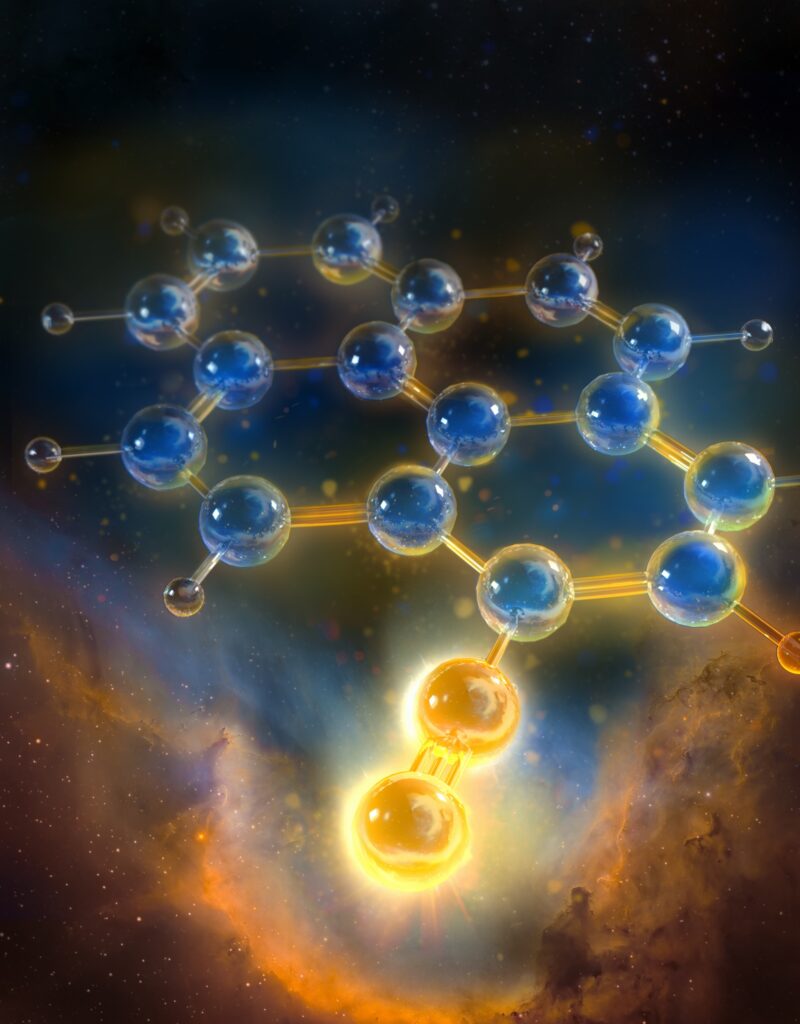2024-10-24 カナダ・ブリティッシュコロンビア大学(UBC)

A representation of 1-cyanopyrene detected in space. Credit: NSF/NSF NRAO/AUI/S. Dagnello.
<関連情報>
- https://news.ubc.ca/2024/10/new-space-molecule-largest-ever-detected-using-radioastronomy/
- https://www.science.org/doi/10.1126/science.adq6391
星間物質1-シアノピレンの検出: 四環式多環芳香族炭化水素 Detection of interstellar 1-cyanopyrene: A four-ring polycyclic aromatic hydrocarbon
Gabi Wenzel, Ilsa R. Cooke, P. Bryan Changala, Edwin A. Bergin, […], and Brett A. McGuire
Science Published:24 Oct 2024
DOI:https://doi.org/10.1126/science.adq6391
Abstract
Polycyclic aromatic hydrocarbons (PAHs) are organic molecules containing adjacent aromatic rings. Infrared emission bands show that PAHs are abundant in space, but only a few specific PAHs have been detected in the interstellar medium. We detect 1-cyanopyrene, a cyano-substituted derivative of the related four-ring PAH pyrene, in radio observations of the dense cloud TMC-1 using the Green Bank Telescope. The measured column density of 1-cyanopyrene is ∼1.52×1012 cm−2, from which we estimate that pyrene contains up to 0.1% of the carbon in TMC-1. This abundance indicates that interstellar PAH chemistry favors the production of pyrene. We suggest that some of the carbon supplied to young planetary systems is carried by PAHs that originate in cold molecular clouds.



